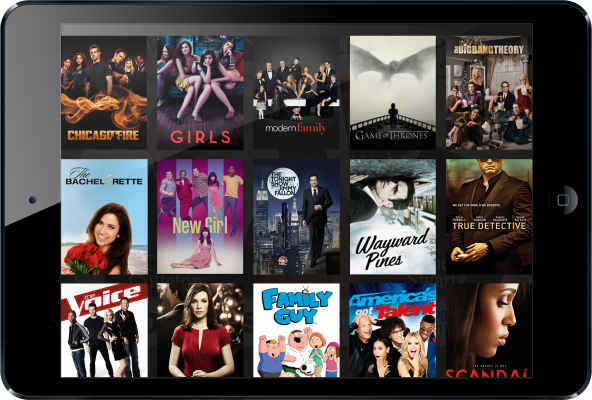Comcast has now become the latest pay TV provider to launch its own alternative to big cable TV packages with the debut of its own internet-based streaming cable service it’s simply calling Stream. The service, which is preparing to go into beta in limited markets this summer, will offer live TV, on-demand content, and cloud DVR access to Comcast Xfinity Internet customers for $15 per month.
The company says the service will initially debut in Boston at the end of the summer, and then will expand to Seattle and Chicago afterwards. By early next year, it will be available anywhere Comcast offers internet.
Stream works without the need for cable tv equipment or additional devices in customers’ homes. Instead, subscribers can use their PCs, tablets, or smartphones to watch live television from “about a dozen networks,” notes Comcast in its announcement. This includes all the major broadcast networks as well as HBO – which now extends HBO’s over-the-top reach to yet another pay TV provider. HBO NOW, the network’s newer standalone streaming service, is currently being resold by Cablevision to its internet customers. And HBO can also be tacked on to Dish’s Sling TV, which is something of a competitor with Comcast Stream.
Like Sling TV, Stream is largely focused making live television more appealing to a new generation of TV customers who prefer to watch on a variety of devices without paying for pricier cable TV subscriptions. While live TV may not be as interesting to Generation Netflix, Comcast also notes that it will offer “thousands of on demand movies and shows” which can be watched at home or away, and it will offer “TV Everywhere” as a part of this package. That means Stream users should be able to authenticate with networks’ mobile apps which ask pay TV subscribers to sign in using their account info in order to unlock full episodes and expanded content.
The TV Everywhere access is important to note, too, because Comcast’s own app won’t stream to television sets – customers would need to use the network apps that are currently available on their streaming media player of choice – like HBO GO’s app, for instance.

Stream additionally includes a cloud DVR service, allowing customers to record and save favorite shows much as they do with cable – another advantage over Sling TV today. However, Sling TV still has an edge when it comes to content selection. It offers a large lineup of cable networks that Stream doesn’t include, like ESPN and AMC. Meanwhile, though Sling TV doesn’t provide access to broadcast networks (ABC, CBS, NBC, Fox, PBS) as Stream does, most cord-cutters know they can get these for free over-the-air using a digital antenna. And if it’s important to them to have a DVR experience, there are DVRs that can record these over-the-air streams for playback on your TV or on other devices, like TiVo’s Roamio OTA DVR or Tablo.
Finally, Stream’s rollout, as noted above, is limited. It will be available to Comcast’s customers, not anyone with an internet connection like Sling TV is currently.
That being said, Stream is still a notable first step representing Comcast’s entry into the internet-based streaming market, and its technology and channel lineup could improve in time, making it more appealing to those who are considering cutting the cord with big cable.
In the long-run, the problem with services like Stream and Sling TV is that they misunderstand the relationship cord cutters and “cord nevers” have with TV today. Thanks to Netflix and other on-demand streaming services, viewers no longer regularly “tune in” to watch appointment television, but rather watch on their own time, on-demand, and on all their devices. Plus, they often binge on back-to-back episodes of favorite shows at a time. Outside of sports and other live events like the Oscars, there’s waning demand for watching live TV content. If these over-the-top streaming TV services actually want to compete in the modern age, they’ll need to have extensive on-demand libraries and exclusive content to combat the threat of services like Netflix and Amazon Prime Instant Video.
